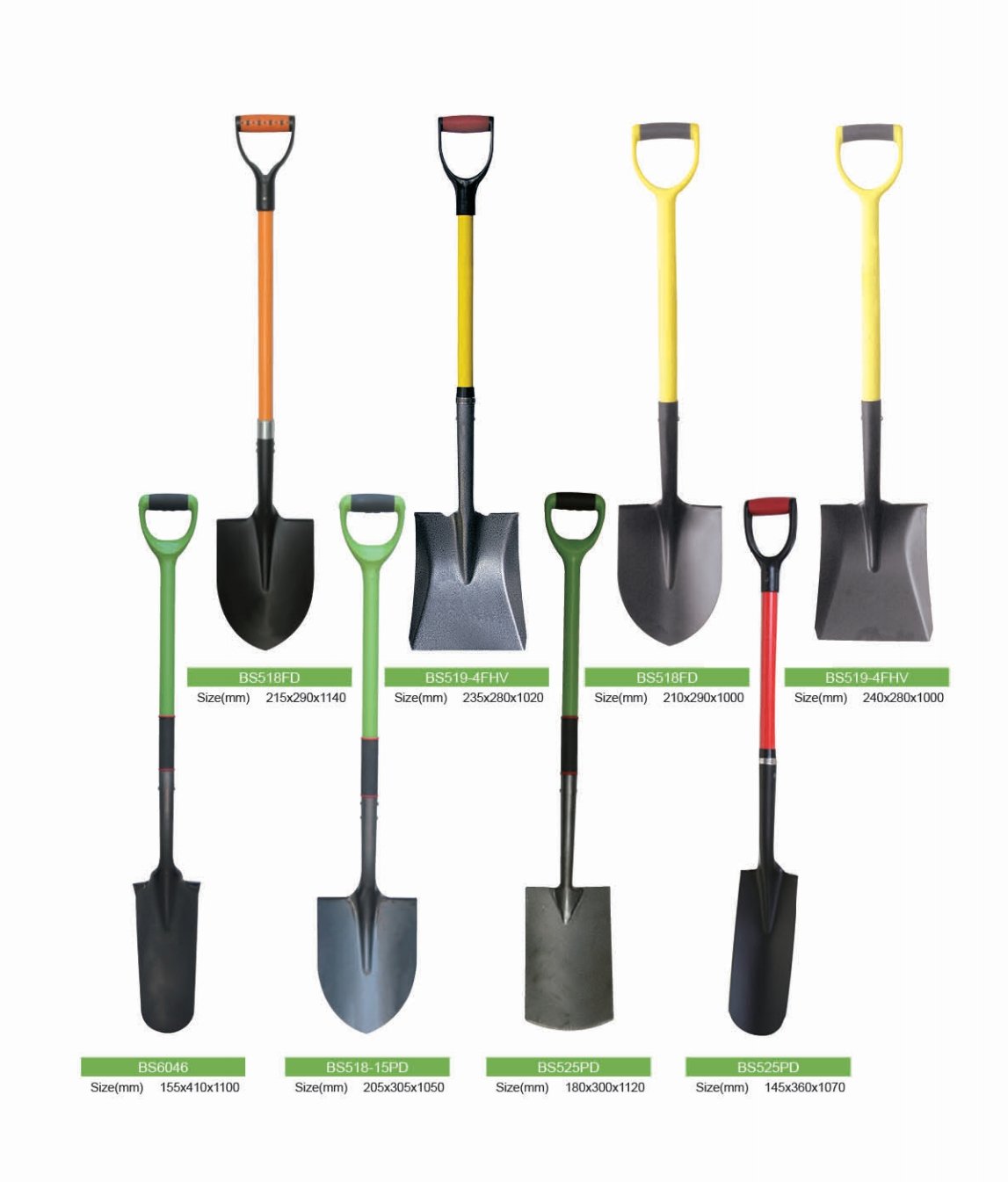Gemlight Drain Spade – Tailored Designs from Our Factory to Your Hands

Looking for a digging tool that’s built to perform? A drain spade is exactly what U need for precise trench work. Its long, narrow blade cuts clean through compact soil, giving U tight, accurate trenches without the mess.
Landscapers love this tool for good reason—it’s perfect for installing irrigation pipes, laying wires, or setting fence posts without tearing up the surrounding ground. The hollow-back blade design slices faster, saving U up to 30% of the digging time compared to regular shovels.
At Gemlight, we make this tool even better. Choose from hardwood or fiberglass handles, both built tough to handle heavy use. The grip is comfy and helps reduce wrist strain, even if U’re digging all day. That means fewer sore muscles and more productivity for U and your team.
Wondering the difference between a drain spade vs trenching shovel? It’s all in the shape.
A drain spade has rounded edges—great for transplanting plants or digging with precision. A trenching shovel? More aggressive, with a pointed tip to punch through roots and harder soil.
Our drain spade shovel also comes with a forward-turned foot step, so U can step down straight with less effort. It’s designed to give U full control, with no twisting—even when U hit rocky or root-filled ground.
But it’s not just for trenches. Use it for edging flower beds, moving shrubs, or cleaning up tight corners where bigger tools can’t fit. It’s a multi-purpose tool that saves time and space on your truck.
Here’s where Gemlight shines—factory-direct customization. U tell us what U need: blade size, handle type, surface finish, logo, even the packaging. No big minimum orders, just custom-built tools for your market.
And with wholesale pricing, U stay competitive while boosting your profit margins. Fast lead times and global shipping mean U get your gear when U need it—right in time for the busy season.
In short, this is a tool made for pros. Reliable, strong, and tailored to your needs. Choose a drain spade from Gemlight and dig smarter, not harder.
what is a drain spade used for?
1,Digging Narrow Trenches for Drainage Systems
Drain spades excel at cutting deep, narrow trenches for installing drain pipes or irrigation lines . Pointed, hollow‑back blades slice through compacted soil efficiently, saving time and effort over standard shovels
2,Transplanting Trees, Shrubs, and Perennials
Long, narrow spade blades make it easy to transplant shrubs, perennials, and small trees with minimal root damage . Shallow disturbance of surrounding soil preserves root integrity for healthy replanting.
3,Edging and Preparing Planting Beds
Drain spades also serve as edging tools, cutting crisp borders along garden beds and pathways . Flat, thin blades slide under turf for clean edging and furrowing tasks
4,Clearing and Maintaining Existing Trenches
Professionals use drain spades to clean out old or collapsed trenches quickly and precisely . The sturdy blade shape and forward‑turned foot step allow U to pry out debris and re‑dig trenches efficiently
what is a drain spade?
A drain spade is a specialized digging tool with a long, narrow blade designed for creating deep, precise trenches for drainage pipes or irrigation lines. Its slender, rounded blade and forward‑turned foot step allow for surgical accuracy in compacted or rocky soils. Constructed from tempered carbon steel or aluminum alloys, it offers superior durability under heavy‑duty use.
Key Features
- Narrow, Hollow‑Back Blade: Typically 5–6″ wide, the blade slices through soil with minimal disruption, ideal for tight trenches
- Forward‑Turned Foot Step: Provides stable foot placement to drive the blade straighter and deeper with less effort .
- Durable Handle: Hardwood, fiberglass, or steel handles deliver leverage and resist flex, reducing user fatigue during extended digging
how to use a drain spade?
- Position the Blade: Place the blade tip on firm ground at your trench line and press down with your foot on the step to initiate penetration .
- Rock the Blade: Push the handle forward while maintaining foot pressure, then lean back to loosen soil in small increments.
- Lift and Deposit Soil: Lift the blade backward to pry out loosened earth, placing it beside the trench to maintain a clear work area .
- Advance Incrementally: Repeat the rocking and lifting steps along the trench line for uniform depth and width.
- Deep Trenches: For trenches deeper than 12 inches, use a post-hole digger to reach the bottom. Then, use a drain spade to smooth the walls and width.
- Keep It Straight: Maintain the blade’s vertical alignment to ensure straight trench walls and consistent depth
drain spade vs trench shovel?
When comparing a drain spade and a trenching shovel, it is important to know their different designs. This will help you choose the right tool for your landscaping or construction tasks.
Design & Structure
- Drain Spade: Features a long, narrow blade with a rounded tip and curved edges. This design allows for precise digging in tight spaces, making it ideal for transplanting or clearing out debris from trenches .
- Trenching Shovel: Typically has a narrow, pointed blade, often no wider than 4–6 inches. Some versions include box sides to help remove the excavated material without disrupting the trench .
Optimal Uses
- Drain Spade: Best suited for transplanting larger plants and bushes, digging in constrained spaces, or clearing out existing trenches .
- Trenching Shovel: This tool is made for digging narrow trenches. It is especially helpful for laying irrigation pipes or cables. A clean, narrow trench is needed for these tasks.
Choosing the Right Tool
- Opt for a drain spade when precision is paramount, especially in tasks like transplanting or working in confined areas.
- Choose a trenching shovel for creating narrow, straight trenches needed for installations like irrigation systems or underground cables.
Knowing these differences helps your projects run smoothly. It lets you choose the tool that fits your needs best.
